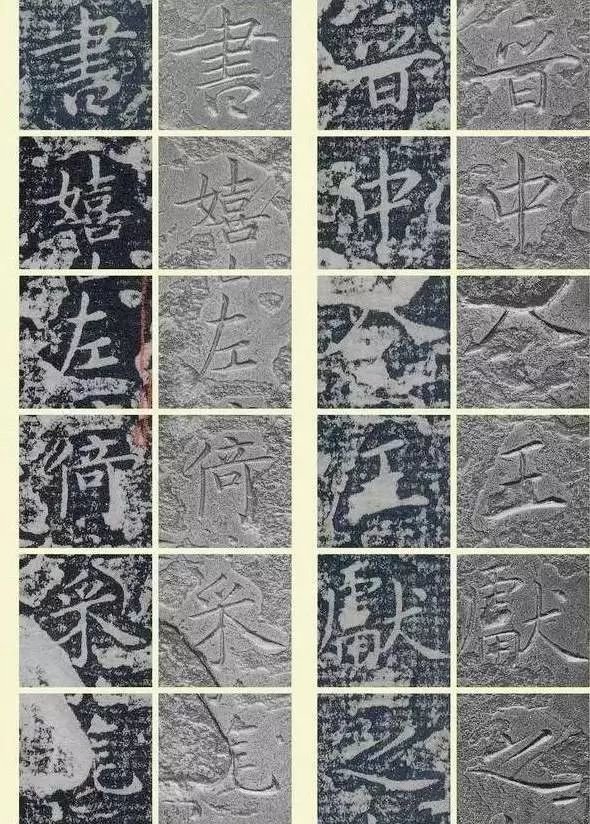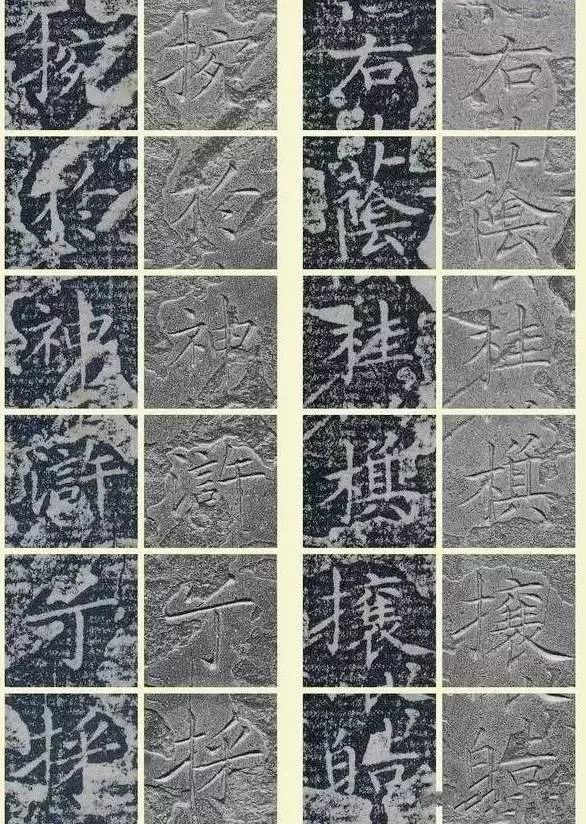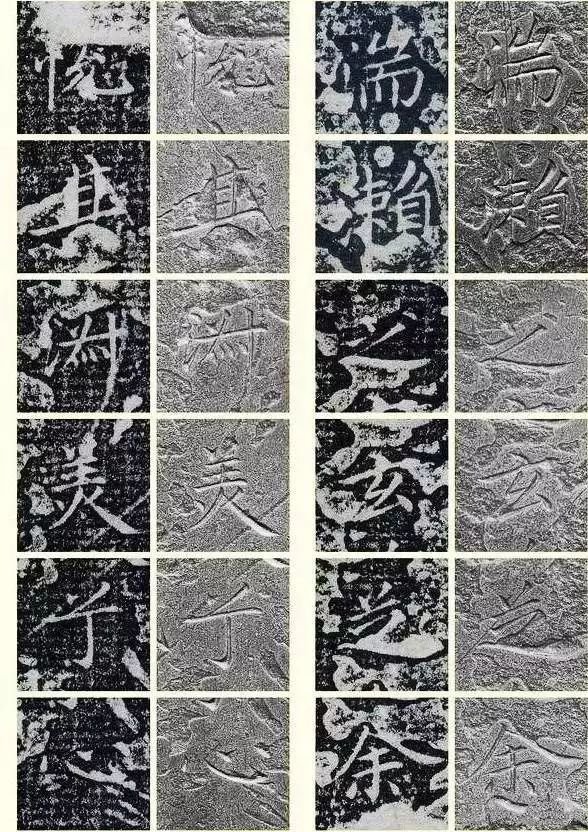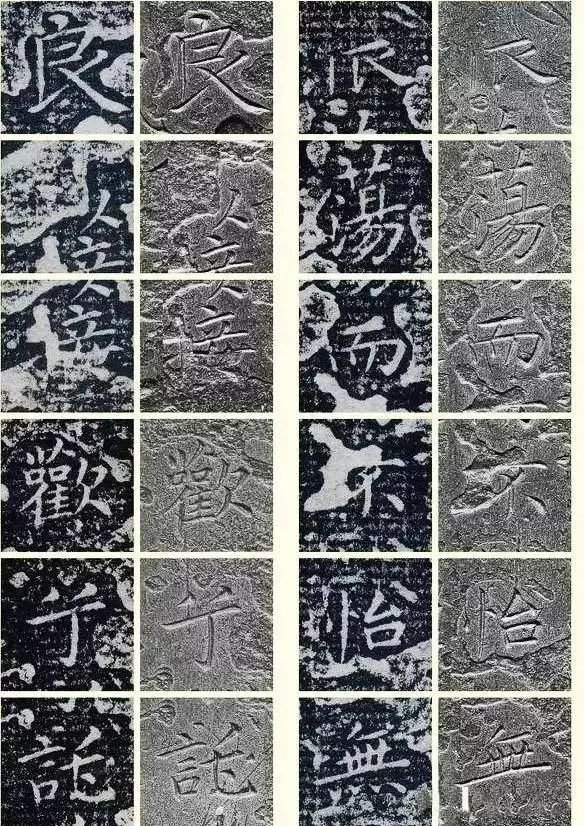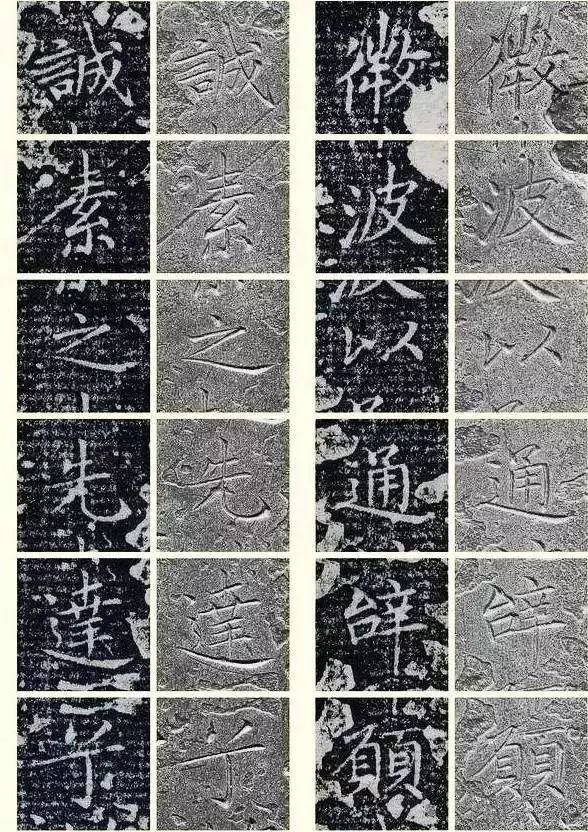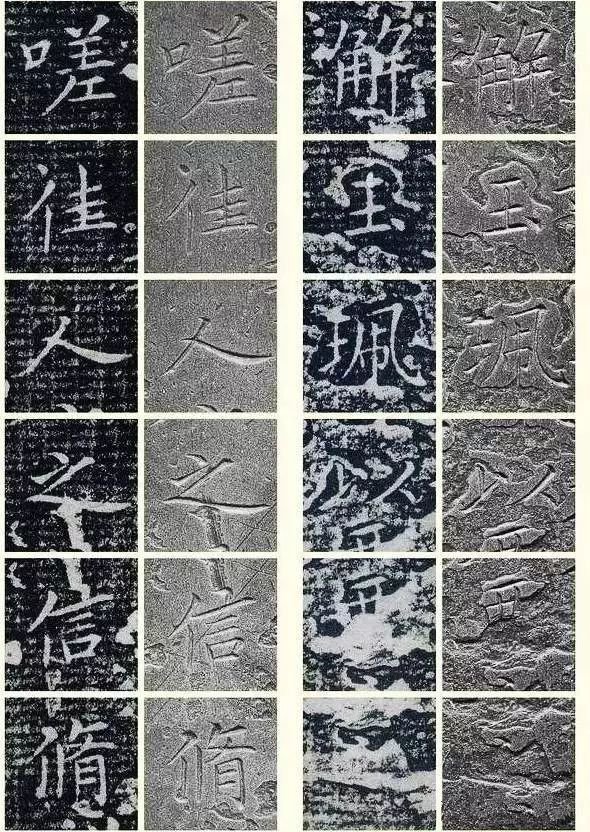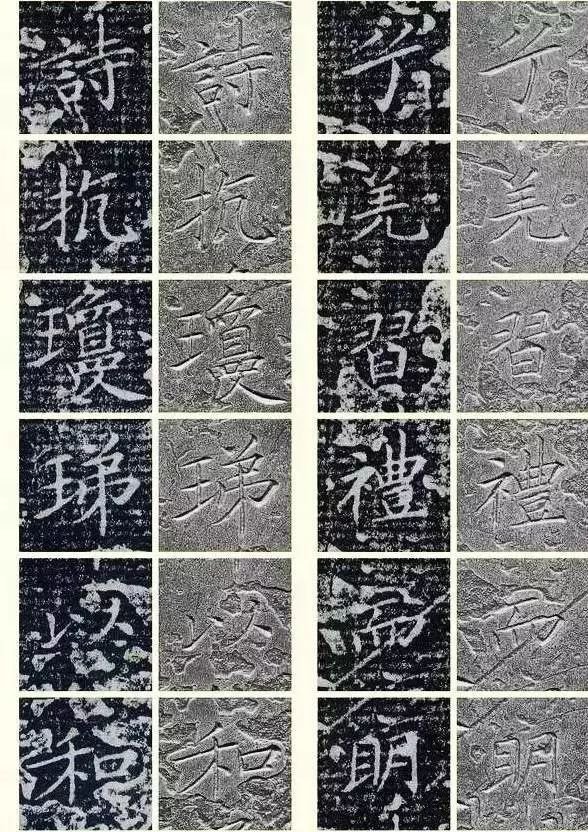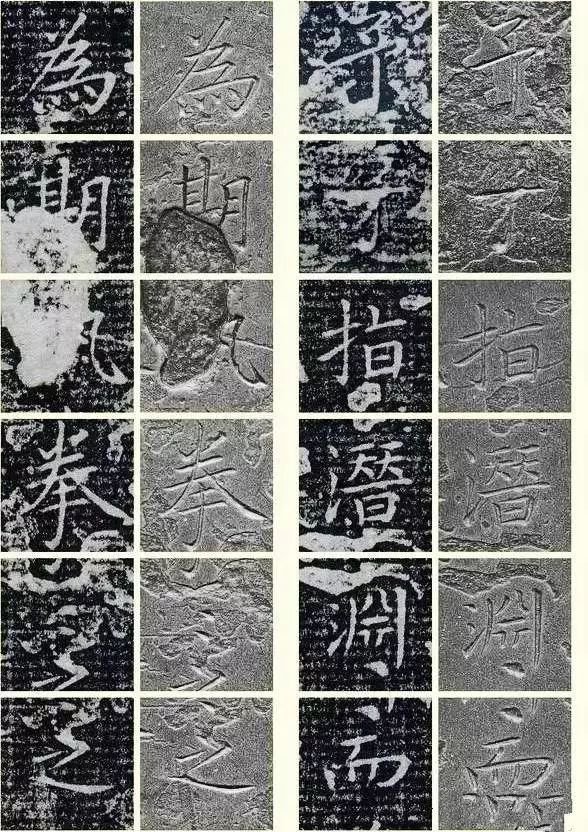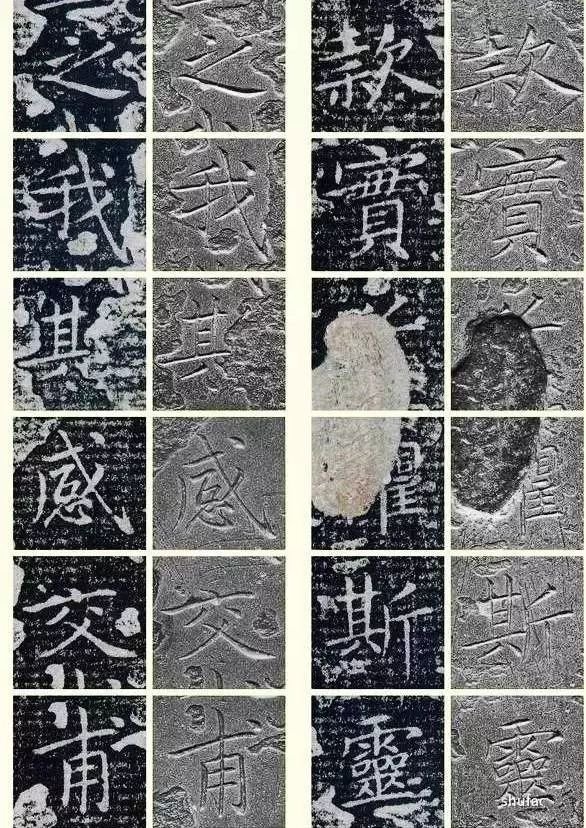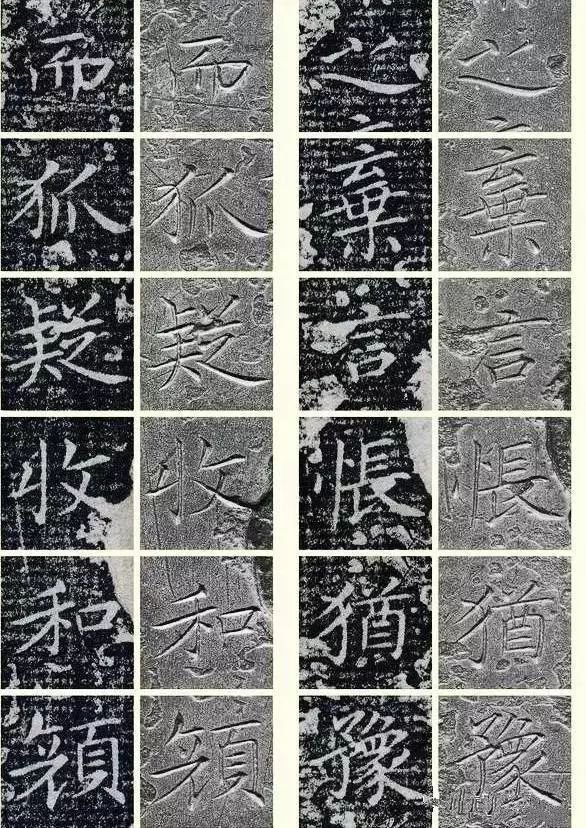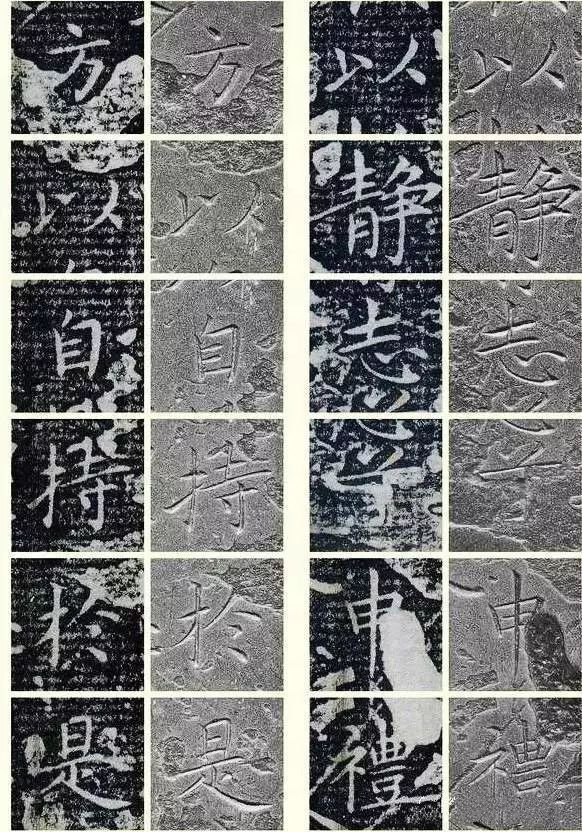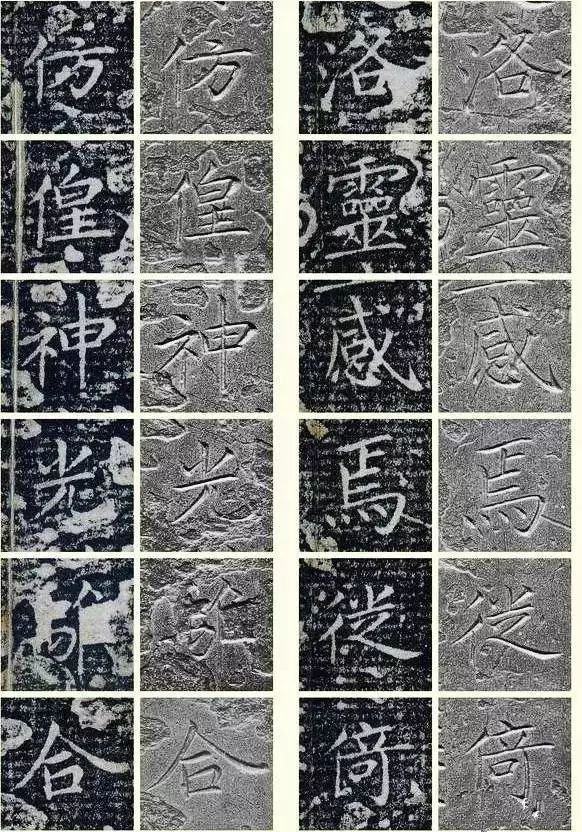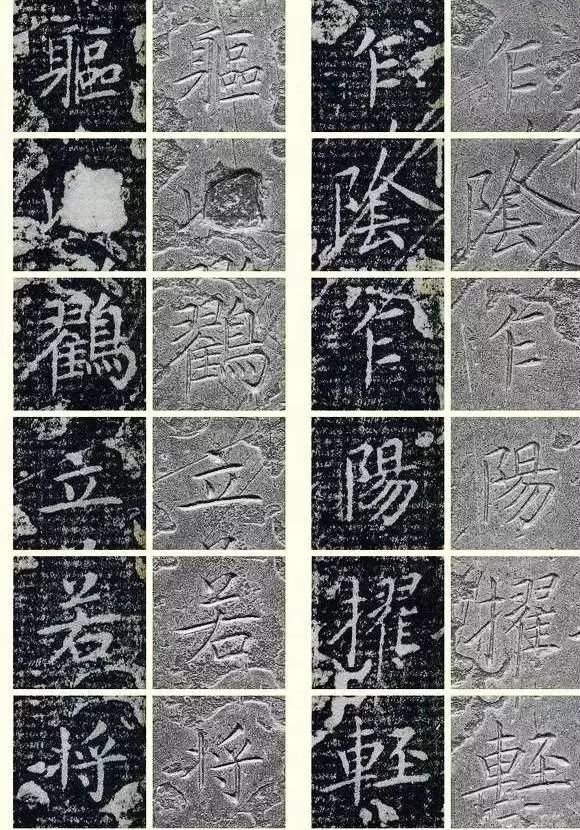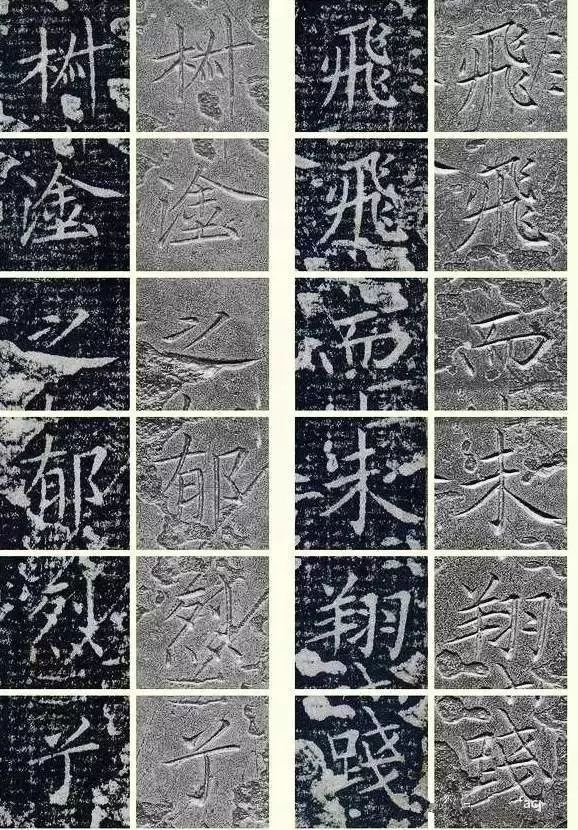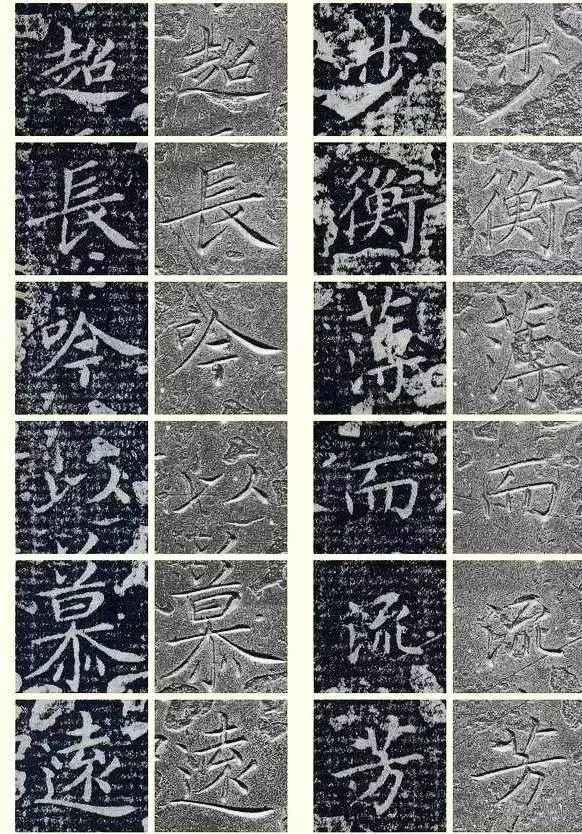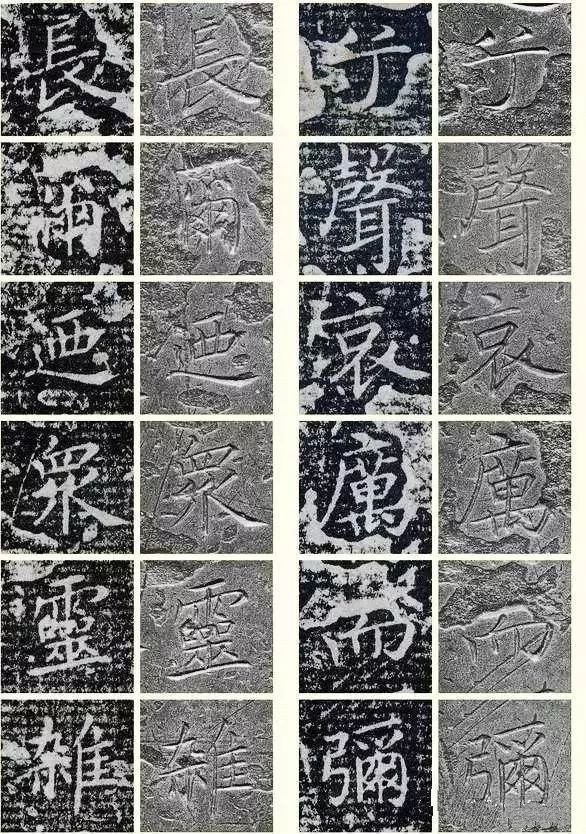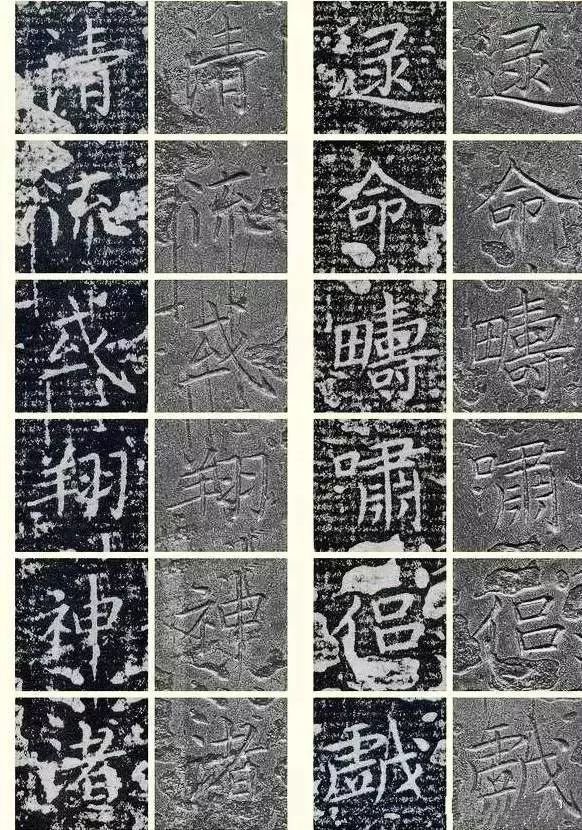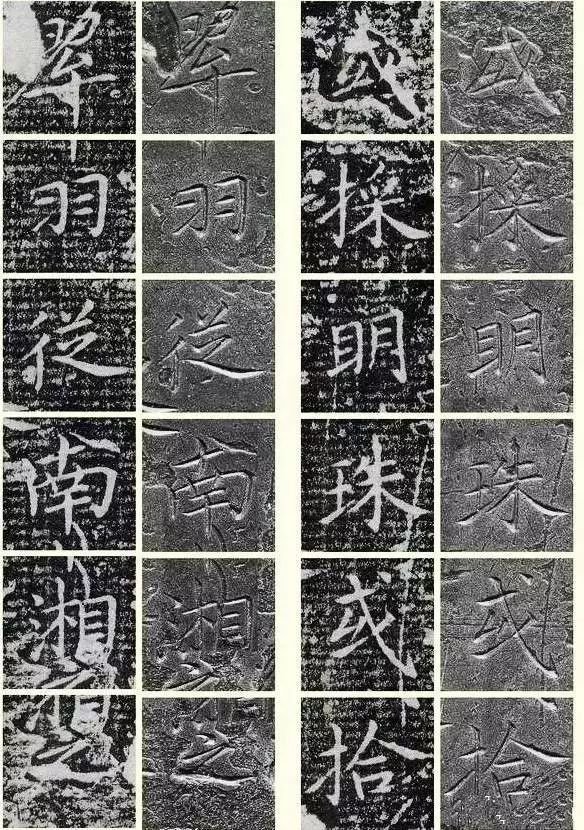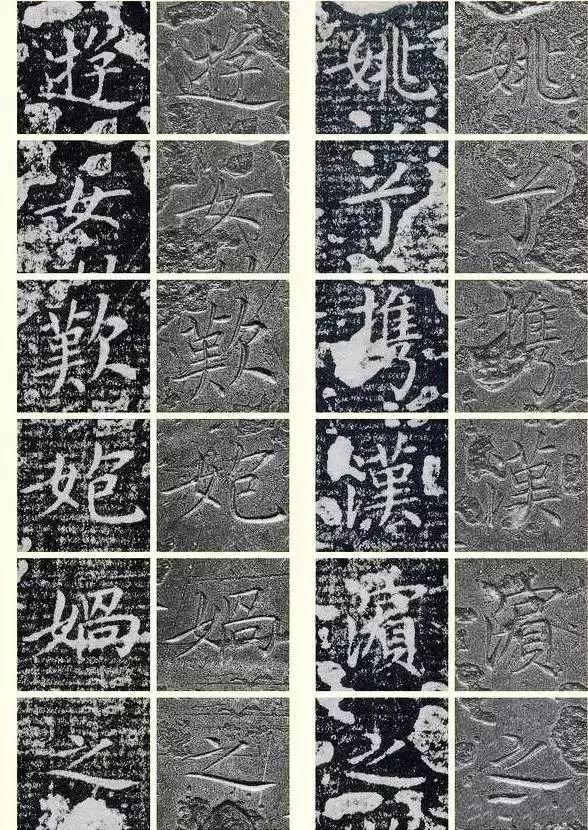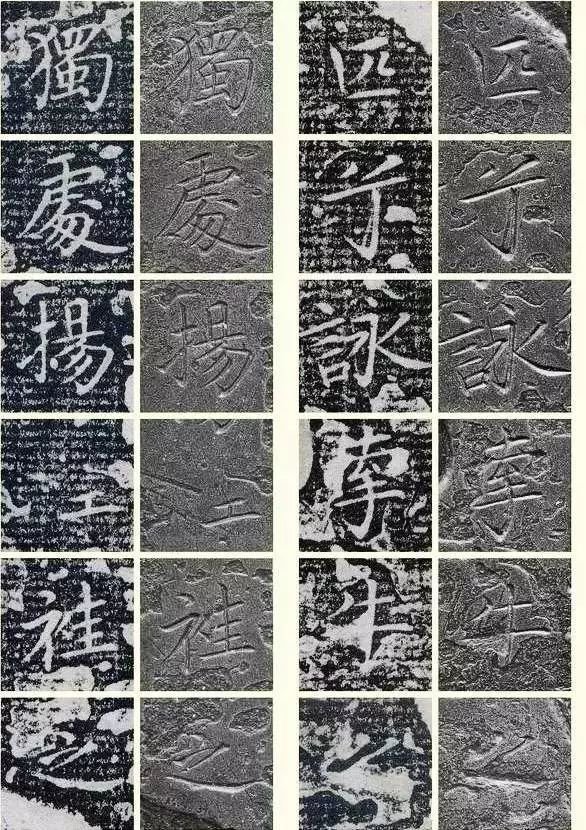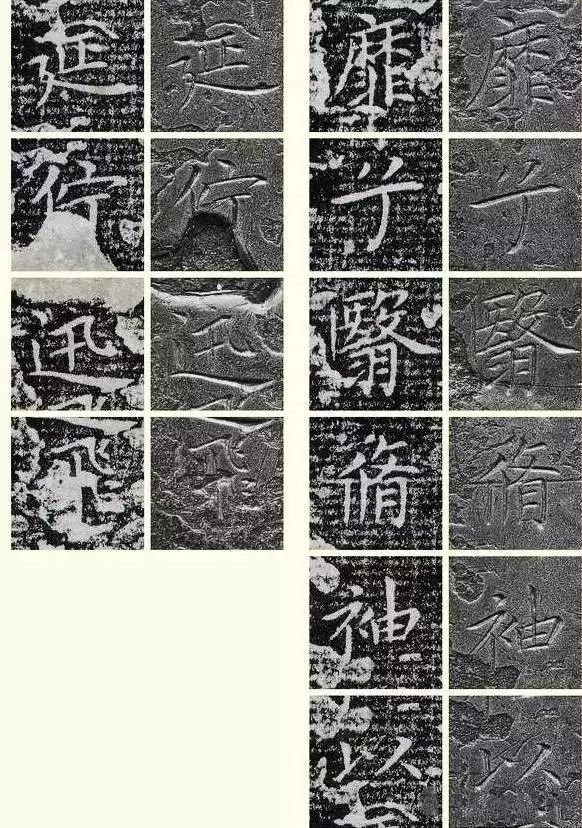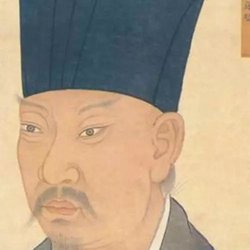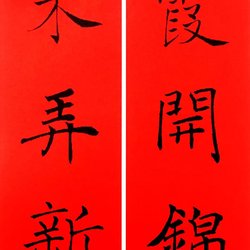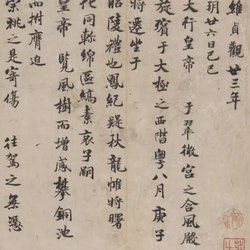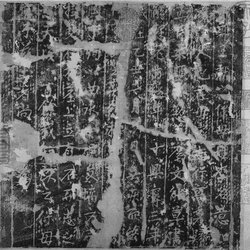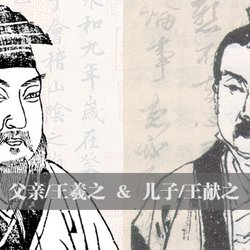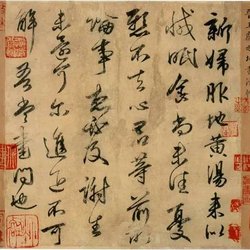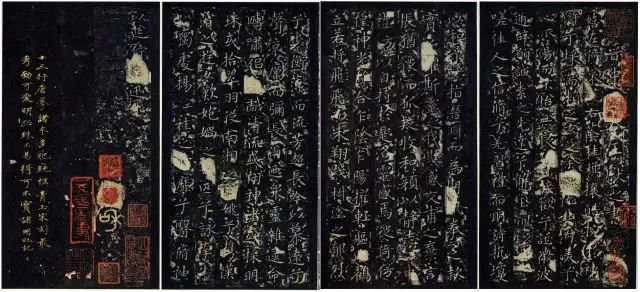
"Thirteen Lines of Luo Shen Fu" (referred to as "Thirteen Lines") is Wang Xianzhi's masterpiece in regular script handed down from generation to generation. "Luo Shen Fu" is a famous prose piece by Cao Zhi of the Three Kingdoms. Wang Xianzhi liked to write this poem, but he only left 13 lines from the word "Xi" to the word "Fei", totaling more than 250 words.
This article is a comparison of the original stone and the rubbings of Wang Xianzhi's "Thirteen Lines on the Jade Edition of Luo Shen Fu". During the circulation of the stele, the rubbings were passed down for a long time and were almost in shape. Through the comparison of the original stone and the rubbings of the stele, calligraphers can understand this The original appearance of calligraphy can also truly understand the essence of "seeing the peak of the brush through the blade".
It is said that there are two copies of his ink marks in the Song Dynasty, namely, the Jin Ma Jian edition and the Tang hard yellow paper edition. Among them, the Tang hard yellow paper version has an inscription and postscript by Liu Gongquan, a calligrapher of the Tang Dynasty. In the Yuan Dynasty, Zhao Mengfu thought it was a Tang copy, and some people thought it was a copy by Liu Gongquan.
This copy was originally obtained by Zhou Yue in the Northern Song Dynasty. It was mistakenly believed to be a copy of the original work and passed down to the world. Later, there was a reprinted version by Shi Shi of Yuezhou in the Southern Song Dynasty, which incorporated Youjun's writing style. "Xuanhe Shupu" records that the hemp paper version entered the imperial palace during the Northern Song Dynasty, and the two later ink copies were lost and their whereabouts are unknown. Only the printed version has been handed down to the world, but it has been turned over and over frequently, so it is no longer available.
In the Southern Song Dynasty, Quan Xiang Jia Sidao first found 9 lines in the hemp paper, and then found 4 lines, which combined into 13 lines. He carved it on a pale stone and euphemistically named it "Jasper", so the edition was called "Jasper". Version", also known as "The Thirteen Lines of the Jade Version".
Wang Xianzhi's "Thirteen Lines from the Jade Edition of Luo Shen Fu"
Comparison of original stone and rubbings
The ancients said
Pen marks visible through knife marks
